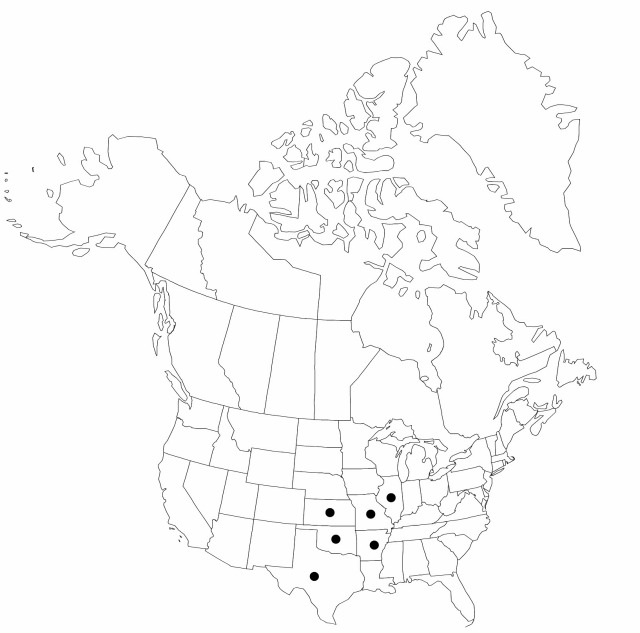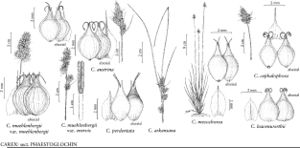Carex arkansana
Bot. Gaz. 21: 6. 1896.
Plants without conspicuous rhizomes. Culms 15–60 cm, 1.4–2 mm wide basally, 0.7–0.9 mm wide distally. Leaves: sheaths tight, green, fronts hyaline; ligules to 1.5 mm, wider than long; widest leaf blades 1–2.5 mm wide. Inflorescences with 3–6 spikes, 1.5–4 cm × 7–12 mm; proximal internodes 1–1.5 times as long as proximal spikes; proximal bracts 6–25 cm, at least 2 times as long as inflorescences; spikes with 8–20 spreading perigynia. Pistillate scales hyaline with green, 3-veined center, ovate, 2–3.5 × 1.2–2.4 mm, body 2/3 to almost length of perigynium, distinctly narrower, apex acuminate to awned. Anthers 1.3–1.8 mm. Perigynia pale green, veinless or indistinctly veined abaxially, 3.3–4 × 2.3–3 mm, base of body somewhat spongy, thickened, margins serrulate distally; beak 0.8–1.2 mm, apical teeth 0.3–0.7 mm. Achenes suborbiculate, 1.5–2 × 1.5–1.8 mm.
Phenology: Fruiting late spring.
Habitat: Moist prairies, forest openings, roadside ditches
Elevation: 100–500 m
Distribution

Ark., Ill., Kans., Mo., Okla., Tex.
Discussion
Selected References
None.
